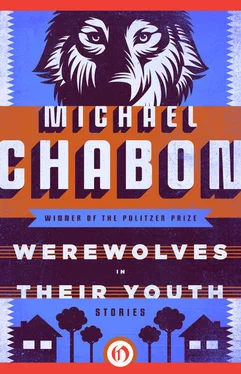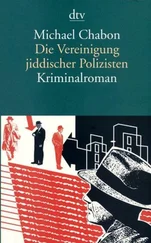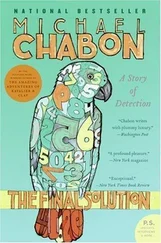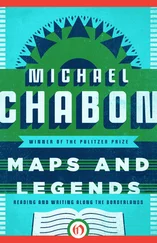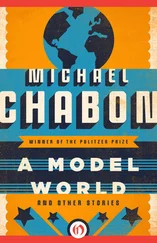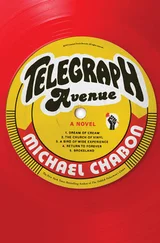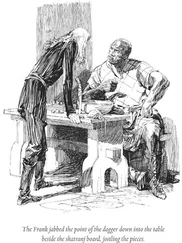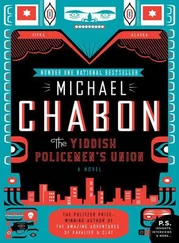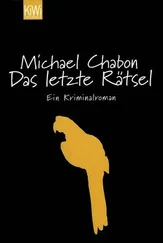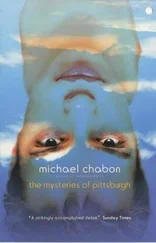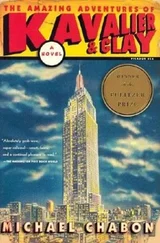Michael Chabon - Werewolves in Their Youth
Здесь есть возможность читать онлайн «Michael Chabon - Werewolves in Their Youth» — ознакомительный отрывок электронной книги совершенно бесплатно, а после прочтения отрывка купить полную версию. В некоторых случаях можно слушать аудио, скачать через торрент в формате fb2 и присутствует краткое содержание. Год выпуска: 2011, Издательство: Open Road, Жанр: Современная проза, на английском языке. Описание произведения, (предисловие) а так же отзывы посетителей доступны на портале библиотеки ЛибКат.
- Название:Werewolves in Their Youth
- Автор:
- Издательство:Open Road
- Жанр:
- Год:2011
- ISBN:нет данных
- Рейтинг книги:5 / 5. Голосов: 1
-
Избранное:Добавить в избранное
- Отзывы:
-
Ваша оценка:
- 100
- 1
- 2
- 3
- 4
- 5
Werewolves in Their Youth: краткое содержание, описание и аннотация
Предлагаем к чтению аннотацию, описание, краткое содержание или предисловие (зависит от того, что написал сам автор книги «Werewolves in Their Youth»). Если вы не нашли необходимую информацию о книге — напишите в комментариях, мы постараемся отыскать её.
Werewolves in Their Youth — читать онлайн ознакомительный отрывок
Ниже представлен текст книги, разбитый по страницам. Система сохранения места последней прочитанной страницы, позволяет с удобством читать онлайн бесплатно книгу «Werewolves in Their Youth», без необходимости каждый раз заново искать на чём Вы остановились. Поставьте закладку, и сможете в любой момент перейти на страницу, на которой закончили чтение.
Интервал:
Закладка:
I felt something, someone’s fingers, brush the back of my neck, and then I was yanked backward by the collar of my coat. I lost my footing and fell to the ground. As the changing shifts of workers flowed around me I looked up and saw a huge man standing over me, his arms folded across his chest. He was wearing a black jacket emblazoned on the breast with a large M. I tried to stand, but he pushed me back down.
“You can just stay right there until the police come,” he said.
“Listen,” I said. My research, clearly, was at an end. My scholarly privileges would be revoked. I would creep back to Boston, where, of course, my committee and, above all, my chair would recommend that I quit the department. “You don’t have to do that.”
Once more I tried to stand, and this time the company guard threw me back to the ground so hard and so quickly that I couldn’t break my fall with my hands. The back of my head slammed against the pavement. A passing worker stepped on my outstretched hand. I cried out.
“Hey,” said a voice. “Come on, Moe. You don’t need to treat him that way.”
It was the sad-eyed man with the yellow hair. He interposed himself between me and my attacker.
“Don’t do this, Ed,” said the guard. “I’ll have to write you up.”
I rose shakily to my feet and started to stumble away, back toward the gates. The guard tried to reach around Ed, to grab hold of me. As he lunged forward, Ed stuck out his foot, and the guard went sprawling.
“Come on, professor,” said Ed, putting his arm around me. “You better get out of here.”
“Do I know you?” I said, leaning gratefully on him.
“No, but you know my nephew, Dexter. He pointed you out to me at the pictures one night.”
“Thank you,” I said, when we reached the gate. He brushed some dust from the back of my coat, handed me the knit stocking cap, then took a black bandanna from the pocket of his dungarees. He touched a corner of it to my mouth, and it came away marked with a dark stain.
“Only a little blood,” he said. “You’ll be all right. You just make sure to stay clear of this place from now on.” He brought his face close to mine, filling my nostrils with the sharp medicinal tang of his aftershave. He lowered his voice to a whisper. “And stay off the beer.”
“What?”
“Just stay off it.” He stood up straight and returned the bandanna to his back pocket. “I haven’t taken a sip in two weeks.” I nodded, confused. I had been drinking two, three, sometimes four bottles of Indian Ring every night, finding that it carried me effortlessly into profound and dreamless sleep.
“Just tell me one thing,” I said.
“I can’t say nothing else, professor.”
“It’s just — what is it you do, in there?”
“Me?” he said, pointing to his chest. “I operate a sprue extruder.”
“Yes, yes,” I said, “but what does a sprue extruder do? What is it for? ”
He looked at me patiently but a little remotely, a distracted parent with an inquisitive child.
“It’s for extruding sprues,” he said. “What else?”
Thus repulsed, humiliated, and given good reason to fear that my research was in imminent jeopardy of being brought to an end, I resolved to put the mystery of the mill out of my mind once and for all and get on with my real business in Plunkettsburg. I went out to the site of the mound complex and worked with my brush and little hand spade all through that day, until the light failed. When I got home, exhausted, Mrs. Eibonas brought me a bottle of Indian Ring and I gratefully drained it before I remembered Ed’s strange warning. I handed the sweating bottle back to Mrs. Eibonas. She smiled.
“Can I bring you another, professor?” she said.
“No, thank you,” I said. Her smile collapsed. She looked very disappointed. “All right,” she said. For some reason the thought of disappointing her bothered me greatly, so I told her, “Maybe one more.”
I retired early and dreamed dreams that were troubled by the scratching of iron on earth and by a clamoring tumult of men. The next morning I got up and went straight out to the site again.
For it was going to take work, a lot of work, if my theory was ever going to bear fruit. During much of my first several months in Plunkettsburg I had been hampered by snow and by the degree to which the site of the Plunkettsburg Mounds — a broad plateau on the eastern slope of Mount Orrert, on which there had been excavated, in the 1890s, thirty-six huge molars of packed earth, each the size of a two-story house — had been picked over and disturbed by that early generation of archaeologists. Their methods had not in every case been as fastidious as one could have hoped. There were numerous areas of old digging where the historical record had, through carelessness, been rendered illegible. Then again, I considered, as I gazed up at the ivy-covered flank of the ancient, artificial hillock my mentor had designated B-3, there was always the possibility that my theory was wrong.
Like all the productions of academe, I suppose, my theory was composed of equal parts of indebtedness and spite. I had formulated it in a kind of rebellion against that grand old man of the field, my chairman, the very person who had inculcated in me a respect for the deep, subtle savagery of the Miskahannock Indians. His view — the standard one — was that the culture of the builders of the Plunkettsburg Mounds, at its zenith, had expressed, to a degree unequaled in the Western Hemisphere up to that time, the aestheticizing of the nihilist impulse. They had evolved all the elaborate social structures — texts, rituals, decorative arts, architecture — of any of the world’s great religions: dazzling feats of abstract design represented by the thousands of baskets, jars, bowls, spears, tablets, knives, flails, axes, codices, robes, and so on that were housed and displayed with such pride in the museum of my university, back in Boston. But the Miskahannocks, insofar as anyone had ever been able to determine (and many had tried), worshiped nothing, or, as my teacher would have it, Nothing. They acknowledged neither gods nor goddesses, conversed with no spirits or familiars. Their only purpose, the focus and the pinnacle of their artistic genius, was the killing of men. Nobody knew how many of the unfortunate males of the neighboring tribes had fallen victim to the Miskahannocks’ delicate artistry of torture and dismemberment. In 1903 Professor William Waterman of Yale discovered fourteen separate ossuary pits along the banks of the river, not far from the present site of the mill. These had contained enough bones to frame the bodies of seven thousand men and boys. And nobody knew why they had died. The few tattered, fragmentary blood-on-tanbark texts so far discovered concerned themselves chiefly with the recurring famines that plagued Miskahannock civilization and, it was generally theorized, had been responsible for its ultimate collapse. The texts said nothing about the sacred arts of killing and torture. There was, my teacher had persuasively argued, one reason for this. The deaths had been purposeless; their justification, the cosmic purposelessness of life itself.
Now, once I had settled myself on spiteful rebellion, as every good pupil eventually must, there were two possible paths available to me. The first would have been to attempt to prove beyond a doubt that the Miskahannocks had, in fact, worshiped some kind of god, some positive, purposive entity, however bloodthirsty. I chose the second path. I accepted the godlessness of the Miskahannocks. I rejected the refined, reasoning nihilism my mentor had postulated (and to which, as I among very few others knew, he himself privately subscribed). The Miskahannocks, I hoped to prove, had had another motive for their killing: They were hungry; according to the tattered scraps of the Plunkettsburg Codex, very hungry indeed. The filed teeth my professor subsumed to the larger aesthetic principles he elucidated thus had, in my view, a far simpler and more utilitarian purpose. Unfortunately, the widespread incidence of cannibalism among the women of a people vanished four thousand years since was proving rather difficult to establish. So far, in fact, I had found no evidence of it at all.
Читать дальшеИнтервал:
Закладка:
Похожие книги на «Werewolves in Their Youth»
Представляем Вашему вниманию похожие книги на «Werewolves in Their Youth» списком для выбора. Мы отобрали схожую по названию и смыслу литературу в надежде предоставить читателям больше вариантов отыскать новые, интересные, ещё непрочитанные произведения.
Обсуждение, отзывы о книге «Werewolves in Their Youth» и просто собственные мнения читателей. Оставьте ваши комментарии, напишите, что Вы думаете о произведении, его смысле или главных героях. Укажите что конкретно понравилось, а что нет, и почему Вы так считаете.
